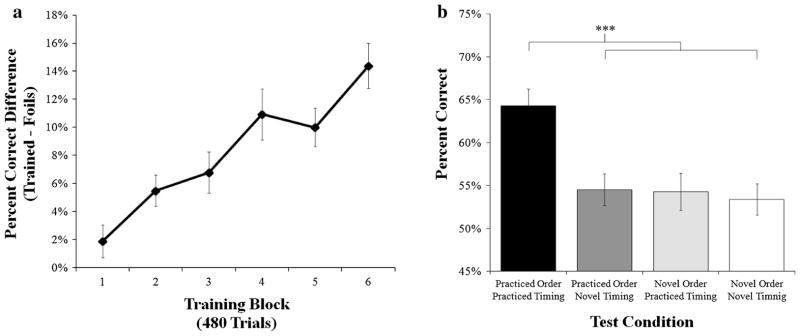Fig. 2.

Sequence-specific learning curve and SISL test performance with coordinated bimanual responses in Experiment 1. a The learning curve was calculated as the percent correct difference between the trained sequence trials and the non-repeating novel segment trials for each block of training, which leads to a sequence-specific performance advantage that increased over training. b The SISL test results showed that participants had a sequence-specific performance advantage at test for the trained sequence of timing and order. Sequence-specific performance benefits at test were not present if either the order or timing component of the sequence was changed
